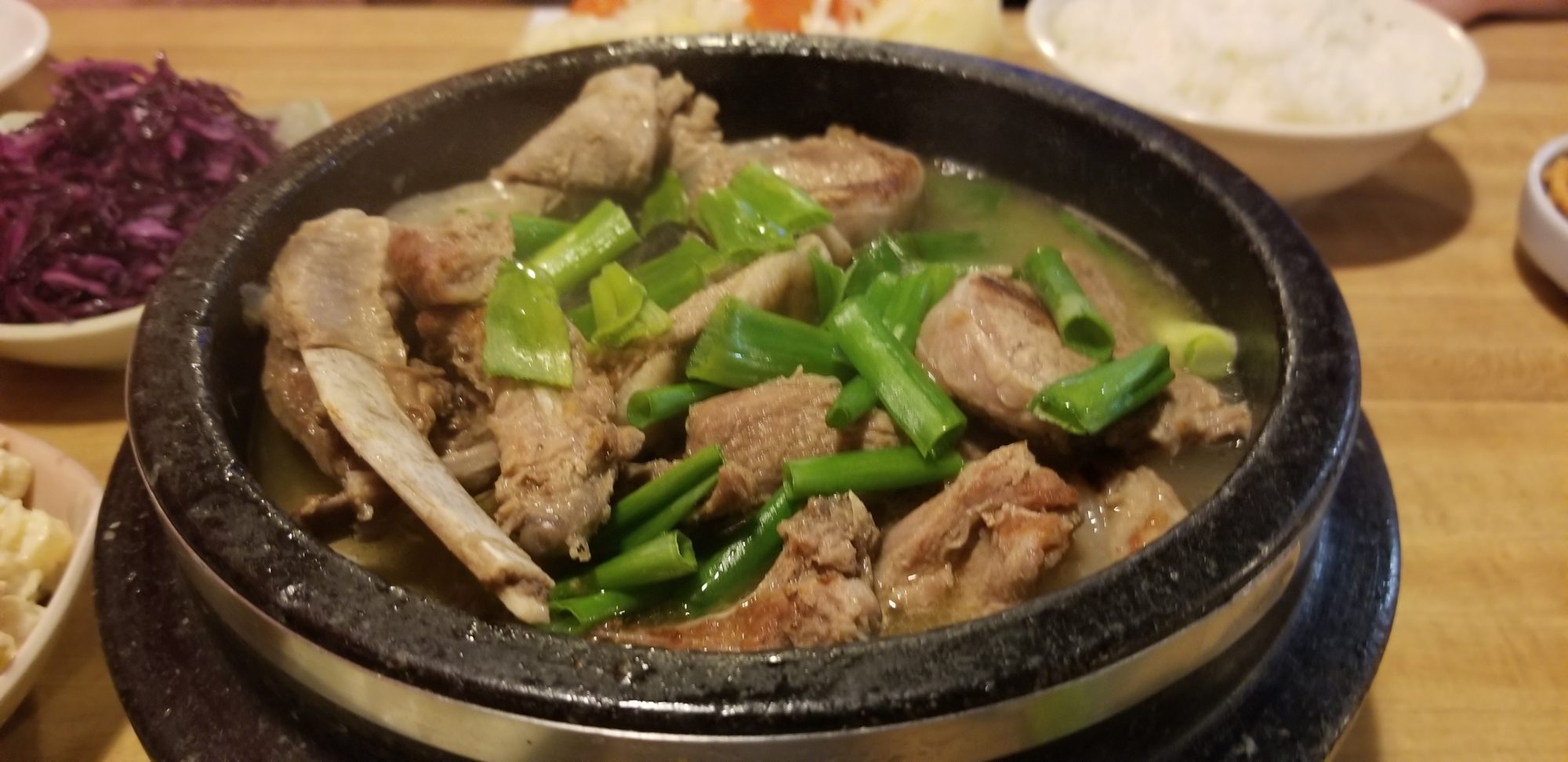[dropcap size=big]R[/dropcap]eal Mongolian BBQ isn’t what you think. Real Mongolian BBQ is eating big chunks of lamb with your fingers. It’s not those greasy noodles fried on a wide flat grill at any number of Chinese restaurants around Los Angeles, an idea originally concocted in Taiwan to sell Japanese food.
The Mongolian BBQ I’m talking about is Khorkhog, pronounced something close to “whore-hog.” That’s right, Whore Hog. The sound of it just screams meat-loving nomads camping out on the windswept Central Asian Steppe. It’s the farthest thing from stir fry, and there is only one place in Los Angeles to get khorkhog, traditional Mongolian food – or any Mongolian food, for that matter – Golden Mongolian Restaurant in Koreatown.
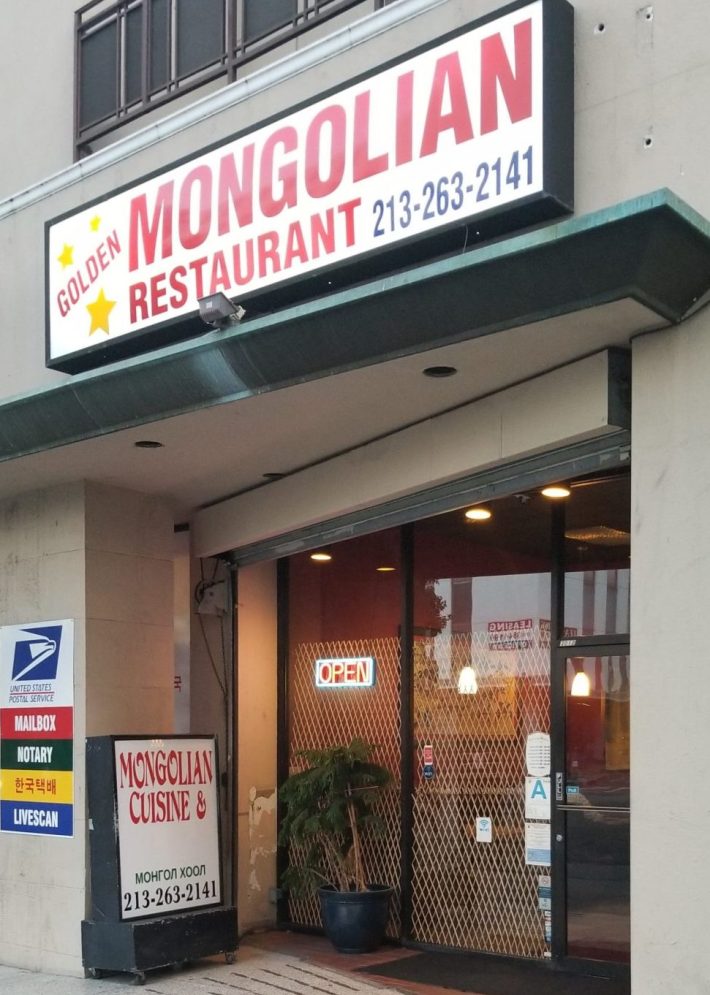
Golden Mongolian is the effort of Ganbat Damba, a 51-year-old former hydraulic engineer. He left his life in Mongolia 15 ago years and settled in Los Angeles. Back then, he had no idea he would be running L.A.’s only Mongolian restaurant. Today the restaurant caters to the city's estimated 5,000 Mongolians residing in L.A., but it's also a destination for anyone in search of authentic Mongolian dishes. Now, the restaurant doubles as a community center, complete with cultural knickknacks for sale in display cabinets.
Damba told L.A. Taco that he came here even though he didn’t know a single word of English, because he wanted to provide a better education for his three boys.
After he got to L.A., Damba eked out a living doing menial jobs at restaurants in Koreatown. It was at a Korean restaurant where he says he began to focus on a singular thought: “Everyone has their own food served at restaurants all over L.A. Why not a Mongolian restaurant?”
RELATED: Why Halal Burmese Food in L.A. Matters to the World's 'Most Persecuted Minority'
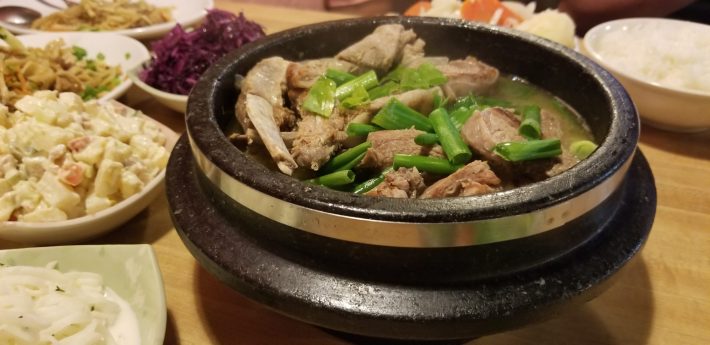
[dropcap size=big]T[/dropcap]raditionally, khorkhog starts with hearty cuts of lamb, sealed tight inside a milk jug or large iron pot with a dozen smooth river stones heated searing hot along with a few potatoes, whole carrots and big cuts of onions (but the vegetable-to-meat ratio should be unharmonious) all for maximal lip-smacking succulence. But Golden Mongolian appears to prepare their khorkhog in a large dolsot (Korean stone pot).
The first time I had it I was on a camping trip with my wife, who is Mongolian, and many of her friends and relatives in Gorkhi-Terelj National Park, a few hours’ drive outside Ulaanbaatar. It’s a rustic, salt-of-the-earth kind of meal, usually cooked out in the Mongolian countryside and on special occasions. So, it’s a treat to discover it available at a restaurant on Wilshire, with its high rises on the edge of Koreatown near Lafayette Park. Only in L.A.
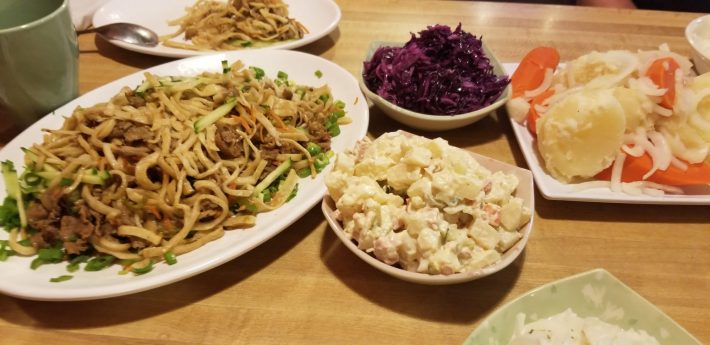
[dropcap size=big]A[/dropcap] Mongolian restaurant in L.A. could only be located in Koreatown. The Korean and Mongolian people share a mutual affinity, some say even ancestral roots. Mongolia and South Korea are part of a handful of democracies in Asia. Koreatown is also where most of L.A.’s Mongolians live, according to Damba.
Damba opened Golden Mongolian in November 2014. He says they have no specialty, but I disagree. It might as well be khorkhog. At $40.00, it’s also the most expensive item on the menu. The portions are huge, enough for four people (or maybe two people could handle one order of khorkhog if they’re collectively channeling the spirit of a Mongol warlord).
Ganbat suggests you call ahead a couple of hours, so they have time to prepare it for you. The word khorkhog is also onomatopoeic of the sound emanating from inside the tightly sealed pot while it’s cooking: “Whhorrrer-hog.”
Javkha Ara, founder and creative director of Artger, a YouTube channel dedicated to exploring Mongolian food and culture, told me Khorkhog is food that emerged from warfare.
“Khorkhog originated with soldiers during the Chinggis Khan period of constant warfare in the 13th century. Soldiers used what they had. That’s why khorkhog, along with boodog, is cooked with stones.”
“Mongolia has harsh climate. It can get to 40 below zero Celsius,"Javkha added. "Khorkhog is usually cooked during the onset of spring for healing after long winter and for good health.”
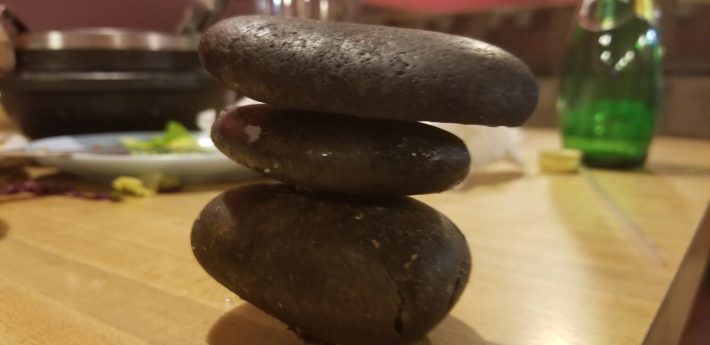
[dropcap size=big]T[/dropcap]he stones will turn black from the heat and the fat they absorb from the lamb. When the dish is ready, the cook hands out the hot stones. They’re tossed from hand to hand and person to person. In Mongolia, my wife handed one to me using a pair of tongs. Those stones are really, really hot. Javkha told me the khorkhog stones have beneficial properties, a belief rooted in Mongolian shamanism.
Though Chinggis Khan conquered every place from China to Russia 800 years ago, there are very few Mongolians today — just 3 million. The country’s the size of Alaska and most live in Ulaanbaatar, but one-third still lead nomadic lives. So, Mongolian barbecue dishes such as Khorkhog remain a culinary tradition linking an ancient people with modern life.
“River stones are very smooth. That’s why they are perfect for barbequing,” Javkha explains.
The recipe’s essential elements are mutton and a metal milk jug, which is commonly used as a cooking pot in Mongolia, natural enough for a country gastronomically obsessed with meat and dairy.
When I had khorkhog with my wife’s family and friends in Mongolian countryside, making khorkhog started with butchering a sheep. It was a task that weirdly seemed like everyone around me knew how to do, even my wife, who is pretty much a city person.
Another step to making khorkhog is pouring water on the hot stones. That steam cooks the meat, and results in an earthy lamb broth. The soup is traditionally passed around to everyone assembled around the table. We each got our own small bowl at Golden Mongolian. But we still got to pass the hot black river stones around, and they still burned my fingers.
RELATED: Beating L.A.’s Summer Heat in Koreatown with Boiling Chicken Ginseng Soup
